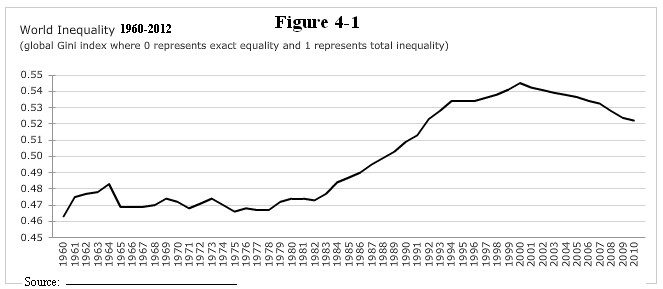| << Chapter < Page | Chapter >> Page > |
In this Chapter, we seek to understand why and how income distribution is changing and to identify those types of government policies which can and cannot help rectify income inequality over time.
We will see, in this and in many following chapters, that many policies used in the past that were ostensibly intended to improve income distribution have either had little effect or have, on occasion, actually worsened this problem. One policy, however, appears to have been successful virtually everywhere. In this and subsequent Chapters, we will examine the most potent policy for rectifying economic inequality: expansion in investment in human capital, especially education and public health. Some important implications of investment in human capital are covered in this Chapter; a fuller discussion is presented in Chapter 5.
Traditionally, the best measure of income inequality or equality has been the Gini Coefficient: Also known as the Gini Index. The Gini ratio is a measure of statistical dispersion developed by the Italian statistician and sociologist Corrado Gini and published in his 1912 paper “Variability and Mutability.”
| Gini= | 0 | Perfect Equality (everyone earns the same). |
| Gini= | 1 | Extreme Inequality (one person gets all the income). |
| 1980 | 2008 | ||
|---|---|---|---|
| U.S. Gini | 0.34 | 0.38 | By one measure, some increase in inequality, continuing through 2013, to 0.44. (However, see estimates cited later in Chapter). |
| Germany Gini | 0.26 | 0.30 | Increase in inequality from a lower base. |
| China Gini | 0.28 | 0.40 | Large increase. |
| China Gini | 0.58 | 0.55 | Some decrease in inequality. |
In 2000, Brazil had the most unequally distributed income in the world. But by 2008, income inequality there had lessened, partly because of Brazil’s ambitious program of conditional cash transfers, involving direct payments to low income families with children in school. This program is discussed extensively in Chapter___. [MG: NEED SOURCE]

The World Gini 1985 began rising in 1992, and then began a slight decline after 2000. Figure 4-1 displays the evolution of world inequality (or equality) from 1960 to 2012, as measured by the Gini coefficient. The graph shows more or less constant worldwide Gini coefficients after 1963 and until 1983. Then, income inequality began to increase. By 2000, the worldwide Gini reached a maximum of about 0.54, after which it began to slowly decline. What we observe in Figure 4-1 is entirely consistent with what we will find in the remainder of this Chapter and this book.
Efforts to understand the many complexities of income distribution issues in emerged nations may be enhanced by considering possible cause and consequences of rising inequality in the wealthy nations of Europe and North America for four reasons.
First trends in income distribution in developed nations, may, in a globalizing world, presage what might soon occur in emerging nations. Second, the study of income distribution issues anywhere involves difficult empirical and methodological questions. If improperly handled, resolution of these questions can lead to unwarranted conclusions. Third, the literature on income distribution in developed nations is substantial, with important lessons for the interpretation of income distribution studies in emerging nations. Finally, recent research on income distribution shows that the observed distribution of income anywhere is greatly affected by how income is measured (pre-tax vs. post-tax, pre-transfer vs. post-transfer) can materially affect conclusions about income distribution trends.

Notification Switch
Would you like to follow the 'Economic development for the 21st century' conversation and receive update notifications?